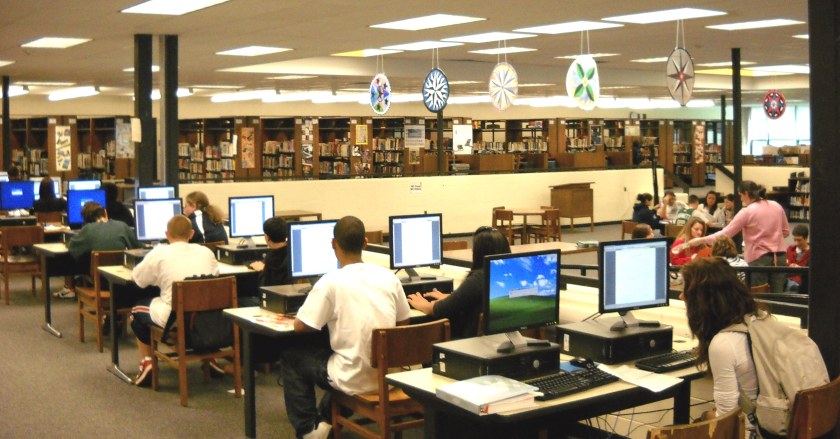Remember those amazing print sources full of information from yesteryear? No, not newspapers. The ones printed on glossy paper. I hear you thinking catalogs, which is close, but no. I’m talking about magazines and other periodicals like professional journals. While many of our young students may view magazines as quaint old disposable technology from a bygone era, we at the HHS Library Media Center still value and promote their use and usability.
In the past, good libraries were measured by how many periodicals they carried and warehoused (remember the old guide to periodic literature … yeah, neither do most people). Nowadays, students often turn to Google and Wikipedia as their first (and unfortunately, their only information sources). Of course, we work hard to teach them that they should be using subscription databases such as those found through their public libraries, but I also remind them to turn to the web-sites of magazines and journals that we carry in our library.
Every year, I try to update our magazine subscriptions according to feedback I get from our faculty, staff and students. Some publications are staples such as Newsweek, Time, U.S. News & World Report, Scientific American, National Geographic, Discover, and Sports Illustrated. Other titles get shuffled around, as we try to find a balance between entertaining, informative and school appropriate publications. Here then, are four of my favorites from our newstand.
- Archaeology: New to our shelves, this publication comes from the Archaeological Association of America. I love this magazine because it is at the intersection of so many subjects that fascinate me such as art, history, ancient civilizations and science. There are many great pictures and articles about people at work discovering the truth about our common past.
- ID: This title is also new to our shelves and so far it has not disappointed. Full of beautiful photographs of mostly ordinary products given new appeal and flavor by design students, artists and commercial manufacturers.
- UTNE Reader: Their tagline is “the best of the alternative press”, and it’s a pretty accurate description. I discovered this magazine when I was in grad school and enjoy their offbeat, but interesting selections. One story in the latest issue for example, warns that, “Your Pet is a Global Warming Machine”. It seems Fido’s got a larger footprint than a Hummer. How cute would a puppy sized Hummer be?
- WIRED: Fifteen years ago, I used to find this magazine’s layout and design really annoying. But we’ve both changed a lot over that time, and now I find myself waiting for the next issue. Their website is also a great place to visit, combining good writing with graphics that are second to none. Whatever you do, don’t steal the LMC issue before I’m done reading it.
I hope you find something interesting on the list, and invite you to stop by and have a good casual read. Thank you for reading and I hope you have a great Friday.
Copyright © henry toromoreno, 2009. All rights reserved

 Show
Show